Monacor CT-3 Handleiding
Monacor
Meetapparatuur
CT-3
Bekijk gratis de handleiding van Monacor CT-3 (4 pagina’s), behorend tot de categorie Meetapparatuur. Deze gids werd als nuttig beoordeeld door 73 mensen en kreeg gemiddeld 4.7 sterren uit 37 reviews. Heb je een vraag over Monacor CT-3 of wil je andere gebruikers van dit product iets vragen? Stel een vraag
Pagina 1/4

SPEAKER -4P XLR /F-3P XLR /F-5P DIN -3P/5P/7P/8P
SPEAKER -4P XLR /M-3P XLR /M-5P DIN-3P/5P/7P/8P
ILLUMINATED LEDs INDIC TE CORRESPONDING PINS A
CONNECT ED.
BANANA CONNECTORS:
CONT INUITY TEST WITH BEEPER AND LED.
ILLUMINATED GROUND LED INDIC TES A
CONNECT ION FROM PIN TO SHELL (SHO T CIRCUIT ).R
ROTAR LY SWITCH FUL Y CLOCKWISE:
BRIGHT LED INDIC TES CHARGED BA ATTERY
.
SPEAKER -8P SPEAKER-8P
2 3 4 5 1 6 7 8
TRS
TRS
RJ 45
RCA
RCA
BAT T.
CHECK
TRS
1 = SLEEVE
2 = T IP
3 = RING
1 = −1
2 = +1
3 = −2
4 = +2
5 = −3
6 = +3
7 = −4
8 = +4
SPEAKER RCA
1 = SCREEN
2 = HOT
CT-3 CABLE TESTER
XLR-3P
1 = 1( )
2 = 2(+)
3 = 3( )
GND (RED)
CONT INUIT Y
T EST
(G REEN)
3
4
2
1
12
11
10
5
13
14
6 15
8 17
7 16
9 18
19
21
23
24
25
22
20
THE AUDIO COMPANY THE AUDIO COMPANY THE AUDIO COMPANY THE AUDIO COMPANY THE AUDIO COMPANY THE AUDIO COMPANY THE AUDIO COMPANY THE AUDIO COMPANY
CT-3
Bestellnummer 0291340
© MONACOR INTERNATIONAL
All rights reserved
A-1716.99.04.05.2023
MONACOR INTERNATIONAL GmbH & Co. KG
Zum Falsch 36, 28307 Bremen
Germany
Importer: Epic Audio Ltd, Unit 9 Apollo Park
Station road, Long Buckby, NN6 7PF
United Kingdom, Company Registration: 13878247
Kabeltestgerät
Diese Anleitung richtet sich an Anwender mit tech-
nischem Grundverständnis. Bitte lesen Sie die Anlei-
tung vor dem Betrieb gründlich durch und heben Sie
sie für ein späteres Nachlesen auf.
1 Verwendungsmöglichkeiten
Das CT-3 dient zur Überprüfung gängiger Audio- und Da-
tenkabel und ist damit ein nützliches Werkzeug, nicht nur
im Bühnenalltag. Die Verbindung der Kontakte aller An-
schlüsse wird über LEDs angezeigt. Der Durch gangsprüfer
mit optischem und akustischem Signal bietet die optimale
Ergänzung zum Überprüfen aller anderen Verbindungen.
2 Wichtige Hinweise
Das Gerät entspricht allen relevanten Richtlinien der EU
und ist deshalb mit gekennzeichnet.
•
Setzen Sie das Gerät nur im Innenbereich ein. Schützen
Sie es vor Feuchtigkeit, Hitze und Kälte (zulässige Ein-
satztemperatur 0 – 40 °C).
•
Verwenden Sie zum Reinigen nur ein trockenes, wei-
ches Tuch, auf keinen Fall Chemikalien oder Wasser.
•
Wird das Gerät zweckentfremdet, falsch an geschlossen,
nicht richtig bedient, überlastet oder nicht fachgerecht
repariert, kann keine Haftung für daraus resultierende
Sach- oder Personenschäden und keine Garantie für
das Gerät übernommen werden.
Soll das Gerät endgültig aus dem Betrieb ge-
nommen werden, entsorgen Sie es gemäß den
örtlichen Vorschriften.
Batterien dürfen nicht im Hausmüll entsorgt werden.
Geben Sie sie gemäß den örtlichen Vorschriften in den
Sondermüll.
3 Bedienung
3.1 Batterie einlegen /auswechseln
1) Den Batteriehalter (25) nach oben schieben, sodass er
ausrastet und dann herausziehen.
2) -Wenn vorhanden, die verbrauchte Batterie herausneh
men.
3) Eine 9-V-Blockbatterie oder einen entsprechenden Akku
in den Batteriehalter einsetzen (Polung beachten!).
4) Den Batteriehalter wieder in das Batteriefach schieben
und zum Schluss nach unten drücken, sodass er ein-
rastet.
Bei längerem Nichtgebrauch die Batterie herausnehmen.
So bleibt das Gerät bei einem eventuellen Auslaufen der
Batterie unbeschädigt.
3.2 Batterie überprüfen
Um den Ladezustand der Batterie zu prüfen, den Wahl-
schalter (21) in die Position BATT. CHECK drehen. Leuch-
tet die LED (22) nicht oder nur schwach, ist die Batterie
verbraucht und sollte erneuert werden.
3.3 Kabel überprüfen
1) Stellen Sie sicher, dass das zu prüfende Kabel span-
nungsfrei ist (also z. B. nicht mit einem Ende noch am
Verstärker angeschlossen ist).
2) Den Stecker des einen Kabelendes an eine der Buchsen
(1 – 9) auf der linken Seite, den Stecker des anderen
Kabelendes an eine der Buchsen (10 – 18) auf der rech-
ten Seite anschließen.
3) Mit dem Drehschalter (21) nacheinander die Kontakte
der auf der linken Geräteseite genutzten Anschluss-
buchse anwählen. Aus der Tabelle geht hervor, welcher
Kontakt jeweils der eingestellten Positionsnummer
entspricht.
Besteht eine Verbindung von dem gewählten Kontakt zu
einer Buchse auf der rechten Gehäuseseite, leuchtet in
der unteren LED-Zeile (20) die entsprechende LED. Die
obere LED-Zeile (19) zeigt an, mit welchen Kontakten
der Buchse auf der rechten Seite der gewählte Kontakt
verbunden ist. Bei Verwendung der DIN-Buchse leuchtet
zusätzlich die LED GND (23) rot, wenn der gewählte Kon-
takt mit dem Steckergehäuse und der Abschirmung des
Kabels verbunden ist.
Beim Anschluss von 2-poligen Klinkensteckern wer-
den die Kontakte 1 und 3 durch den Stecker miteinander
verbunden, daher leuchten in der oberen LED-Reihe (19)
beide LEDs.
3.4 Durchgangsprüfer
An die beiden 4-mm-Bananenbuchsen (24) des Durch-
gangsprüfers die beiliegenden Prüfkabel anschließen. Die
Prüfspitzen an die beiden Enden der zu testenden, span-
nungsfreien Leitung halten. Bei bestehender Leitungs-
verbindung ertönt ein Signal und die LED zwischen den
Buchsen leuchtet grün.
4 Transport
Beim Transport des Gerätes darauf achten, dass die An-
schlüsse nicht versehentlich durch leitende Gegenstände
verbunden werden. Sonst ist möglicherweise die Batterie
beim nächsten Einsatz verbraucht.
5 Technische Daten
Stromversorgung: . . . . . . Batterie, Typ: 9-V-Block
Einsatztemperatur: . . . . . 0 – 40 °C
Abmessungen: . . . . . . . . 112 × 190 × 60 mm
Gewicht: . . . . . . . . . . . . . 800 g
Änderungen vorbehalten.
6,3-mm-Klinke
(3, 12)
1 3 2
1+ 3 2
DIN
(6, 15) 5
1
4
7
8
6
2
3
GND
Cinch
(5, 14)
1
2
XLR
3-polig
(8)
2 1
3
XLR
3-polig
(17)
1 2
3
XLR
5-polig
(7)
1
5
4 2
3
PUSH
XLR
5-polig
(16)
1
2 4
5
3
Speaker
8-polig
(1, 10)
[4
-
] [4+]
[2+]
[3
-
]
[3+]
[1
-
]
[1+]
[2
-
]
1
2
7
4
6
5
8
3
Speaker
4- oder 2-polig
(9, 18)
4
[2
-
][2+]
2
1
[1
-
] [1+]
3
2
1
[1
-
]
[1+]
Modularbuchse
8P8C „RJ 45“
(2, 11) 1…8
USB 1/ 2 Typ A
(4, 13)
1 2 3 4
Deutsch

SPEAKER -4P XLR /F-3P XLR /F-5P DIN -3P/5P/7P/8P
SPEAKER -4P XLR /M-3P XLR /M-5P DIN-3P/5P/7P/8P
ILLUMINATED LEDs INDIC TE CORRESPONDING PINS A
CONNECT ED.
BANANA CONNECTORS:
CONT INUITY TEST WITH BEEPER AND LED.
ILLUMINATED GROUND LED INDIC TES A
CONNECT ION FROM PIN TO SHELL (SHO T CIRCUIT ).R
ROTAR LY SWITCH FUL Y CLOCKWISE:
BRIGHT LED INDIC TES CHARGED BA ATTERY
.
SPEAKER -8P SPEAKER-8P
2 3 4 5 1 6 7 8
TRS
TRS
RJ 45
RCA
RCA
BAT T.
CHECK
TRS
1 = SLEEVE
2 = T IP
3 = RING
1 = −1
2 = +1
3 = −2
4 = +2
5 = −3
6 = +3
7 = −4
8 = +4
SPEAKER RCA
1 = SCREEN
2 = HOT
CT-3 CABLE TESTER
XLR-3P
1 = 1( )
2 = 2(+)
3 = 3( )
GND (RED)
CONT INUIT Y
T EST
(G REEN)
3
4
2
1
12
11
10
5
13
14
6 15
8 17
7 16
9 18
19
21
23
24
25
22
20
THE AUDIO COMPANY THE AUDIO COMPANY THE AUDIO COMPANY THE AUDIO COMPANY THE AUDIO COMPANY THE AUDIO COMPANY THE AUDIO COMPANY THE AUDIO COMPANY
© MONACOR INTERNATIONAL
All rights reserved
A-1716.99.04.05.2023
MONACOR INTERNATIONAL GmbH & Co. KG
Zum Falsch 36, 28307 Bremen
Germany
Importer: Epic Audio Ltd, Unit 9 Apollo Park
Station road, Long Buckby, NN6 7PF
United Kingdom, Company Registration: 13878247
CT-3
Order Number 0291340
Cable Tester
These instructions are intended for users with basic
technical knowledge. Please read the instructions
carefully prior to operation and keep them for later
reference.
1 Applications
The CT-3 is designed for testing standard audio cables
and data cables and therefore is a useful tool not only for
everyday stage applications. LEDs indicate all contact con-
nections. The continuity tester with visual and acoustic sig-
nals is a perfect tool for testing all the other connections.
2 Important Notes
The device corresponds to all relevant directives of the EU
and is therefore marked with .
The device corresponds to the relevant UK legislation and
is therefore marked with .UKCA
•
The device is suitable for indoor use only. Protect it
against humidity, high or low temperatures (admissible
ambient temperature range 0 – 40 °C).
•
For cleaning only use a dry, soft cloth, never use chem-
icals or water.
•
No guarantee claims for the device and no liability for
any resulting personal damage or material damage will
be accepted if the device is used for other purposes
than originally intended, if it is not correctly connected
or operated, if it is overloaded or not re paired in an
expert way.
If the device is to be put out of operation defin-
itively, dispose of the device in accordance with
local regulations.
Never put batteries in the household waste. Always dis-
pose of the batteries in accordance with local regulations.
3 Operation
3.1 Inserting / Replacing the battery
1) Push the battery support (25) upwards until it unlocks
and then remove the battery support.
2) If applicable, remove the discharged battery.
3) Insert a 9 V battery or a corresponding rechargeable
battery into the battery support (observe the polarity!).
4) -Push back the battery holder into the battery com
partment, and then push down the battery holder so
that it locks.
If the device is not used for a longer period of time, re-
move the battery. Thus, the device will not be damaged
if the battery should leak.
3.2 Checking the battery
To check the charging state of the battery, set the selector
switch (21) to the position BATT. CHECK. If the LED (22)
does not light up or only lights up dimly, the battery is
discharged and should be replaced.
3.3 Testing the cable
1) Make sure that the cable to be tested does not carry
any voltage (make sure that no cable end is connected
to the amplifier, for example).
2) Connect the plug of one cable end to one of the jacks
(1 to 9) on the left side, connect the plug of the other
cable end to one of the jacks (10 to 18) on the right
side.
3) -With the rotary switch (21), successively select the con
tacts of the connection jack used on the left side of
the device. The table indicates the contacts that corre-
spond to the position numbers adjusted.
If there is a connection from the selected contact to a
jack on the right side of the housing, the corresponding
LED in the lower LED row (20) lights up. The upper LED
row (19) indicates the connection of the selected contact
to the respective contacts of the jack on the right side.
When using the DIN jack, the LED GND (23) lights up in
red additionally if the selected contact is connected to the
plug housing and the screening of the cable.
When connecting 2-pole 6.3 mm plugs, the contacts 1
and 3 are connected with each other by the plug, there-
fore both LEDs light up in the upper LED row (19).
3.4 Continuity tester
Connect the two test cables provided to the two 4 mm
banana jacks (24) of the continuity tester. Hold the test
probes to the two ends of the cable to be tested, not
carrying any voltage. When there is a cable connection,
the signal will sound and the LED between the jacks will
light up in green.
4 Transport
When transporting the device, make sure that the con-
nections are not accidentally connected by conducting
objects. Otherwise the battery will possibly be discharged
the next time it is used.
5 Specifications
Power supply: . . . . . . . . . 9 V battery
Ambient temperature: . . 0 – 40 °C
Dimensions: . . . . . . . . . . 112 × 190 × 60 mm
Weight: . . . . . . . . . . . . . 800 g
Subject to technical modification.
6.3 mm plugs
(3, 12)
1 3 2
1+ 3 2
DIN
(6, 15) 5
1
4
7
8
6
2
3
GND
RCA
(5, 14)
1
2
XLR
3 poles
(8)
2 1
3
XLR
3 poles
(17)
1 2
3
XLR
5 poles
(7)
1
5
4 2
3
PUSH
XLR
5 poles
(16)
1
2 4
5
3
Speaker
8 poles
(1, 10)
[4
-
] [4+]
[2+]
[3
-
]
[3+]
[1
-
]
[1+]
[2
-
]
1
2
7
4
6
5
8
3
Speaker
4 or 2 poles
(9, 18)
4
[2
-
][2+]
2
1
[1
-
] [1+]
3
2
1
[1
-
]
[1+]
Modular jack
8P8C “RJ 45”
(2, 11) 1…8
USB 1/ 2, type A
(4, 13)
1 2 3 4
English

SPEAKER -4P XLR /F-3P XLR /F-5P DIN -3P/5P/7P/8P
SPEAKER -4P XLR /M-3P XLR /M-5P DIN-3P/5P/7P/8P
ILLUMINATED LEDs INDIC TE CORRESPONDING PINS A
CONNECT ED.
BANANA CONNECTORS:
CONT INUITY TEST WITH BEEPER AND LED.
ILLUMINATED GROUND LED INDIC TES A
CONNECT ION FROM PIN TO SHELL (SHO T CIRCUIT ).R
ROTAR LY SWITCH FUL Y CLOCKWISE:
BRIGHT LED INDIC TES CHARGED BA ATTERY
.
SPEAKER -8P SPEAKER-8P
2 3 4 5 1 6 7 8
TRS
TRS
RJ 45
RCA
RCA
BAT T.
CHECK
TRS
1 = SLEEVE
2 = T IP
3 = RING
1 = −1
2 = +1
3 = −2
4 = +2
5 = −3
6 = +3
7 = −4
8 = +4
SPEAKER RCA
1 = SCREEN
2 = HOT
CT-3 CABLE TESTER
XLR-3P
1 = 1( )
2 = 2(+)
3 = 3( )
GND (RED)
CONT INUIT Y
T EST
(G REEN)
3
4
2
1
12
11
10
5
13
14
6 15
8 17
7 16
9 18
19
21
23
24
25
22
20
THE AUDIO COMPANY THE AUDIO COMPANY THE AUDIO COMPANY THE AUDIO COMPANY THE AUDIO COMPANY THE AUDIO COMPANY THE AUDIO COMPANY THE AUDIO COMPANY
© MONACOR INTERNATIONAL
All rights reserved
A-1716.99.04.05.2023
MONACOR INTERNATIONAL GmbH & Co. KG
Zum Falsch 36, 28307 Bremen
Germany
Importer: Epic Audio Ltd, Unit 9 Apollo Park
Station road, Long Buckby, NN6 7PF
United Kingdom, Company Registration: 13878247
CT-3
Référence numérique 0291340
Testeur de câbles
Cette notice s‘adresse aux utilisateurs avec des con-
naissances techniques de base. Veuillez lire la pré-
sente notice avec attention avant le fonctionnement
et conservez-la pour pouvoir vous y reporter ulté-
rieurement.
1 Possibilités d’utilisation
Le CT-3 permet de vérifier des cordons audio et de don-
nées, c‘est donc un outil utile, pas seulement pour des ap-
plications quotidiennes sur scène. La connexion de tous les
contacts est indiquée par des LEDs. Le testeur de continui-
té avec signal optique et acoustique propose un complé-
ment optimal pour vérifier toutes les autres connexions.
2 Conseils importants
L’appareil répond à toutes les directives nécessaires de
l’Union européenne et porte donc le symbole .
•
L’appareil n’est conçu que pour une utilisation en inté-
rieur.Protégez-le de l’humidité, du froid et de la chaleur
(plage de température de fonctionnement autorisée :
0 – 40 °C).
•
Pour le nettoyage, utilisez uniquement un chiffon sec
et doux, en aucun cas de produits chimiques ou d’eau.
•
Nous déclinons toute responsabilité en cas de dom-
mages matériels ou corporels résultants si l’appareil est
utilisé dans un but autre que celui pour lequel il a été
conçu, s’il n’est pas correctement branché ou utilisé, s’il
y a surcharge ou s’il n’est pas réparé par une personne
habilitée, en outre, la garantie deviendrait caduque.
Lorsque l’appareil est définitivement retiré du
service, éliminez-le conformément aux direc-
tives locales.
Les batteries ne doivent pas être jetées dans la poubelle
domestique. Déposez-les dans un container spécifique
conformément aux directives locales.
CARTONS ET EMBALLAGE
PAPIER À TRIER
3 Utilisation
3.1 Insertion et changement de la batterie
1) Poussez le support de batterie (25) vers le haut pour
qu‘il se désenclenche et puisse être retiré.
2) Retirez la batterie déchargée, si existante.
3) Insérez une batterie 9 V ou un accumulateur corres-
pondant (attention à la polarité !).
4) Replacez le support de batterie dans le compartiment,
puis appuyez vers le bas pour qu‘il s‘enclenche.
En cas de non utilisation prolongée, retirez la batterie, elle
pourrait couler et endommager l’appareil.
3.2 Vérification de la batterie
Pour vérifier l’état de charge de la batterie, tournez le
sélecteur (21) sur la position BATT. CHECK. Si la LED (22)
ne brille pas ou brille trop faiblement, la batterie est morte
et devrait être remplacée.
3.3 Vérification de câble
1) Assurez-vous que le câble à tester n’est pas conducteur
de tension (par exemple assurez-vous qu’une extrémité
n’est pas encore reliée à l’amplificateur).
2) Reliez la fiche d’une extrémité du cordon à une des
prises (1 à 9) sur le côté gauche et la fiche de l’autre
extrémité du cordon à une des prises (10 à 18) sur le
côté droit.
3) Avec le sélecteur (21), sélectionnez les uns après les
autres les contacts de la prise de branchement utilisée
sur le côté gauche de l’appareil. Le tableau indique
quel contact correspond au numéro réglé de position
dans chaque cas.
S’il y a une connexion venant du contact sélectionné vers
une prise sur le côté droit de l’appareil, la LED correspon-
dante dans la ligne inférieure de LEDs (20) brille. La ligne
supérieure de LEDs (19) indique avec quels contacts de la
prise sur le côté droit, le contact sélectionné est relié. Si
vous utilisez la prise DIN, la LED GND (23) brille en rouge
en plus si le contact sélectionné est relié avec le corps de
la fiche et au blindage du câble.
Si vous branchez des fiches jack 6,35 2 pôles, les
contacts 1 et 3 sont reliés ensemble par la fiche, par consé-
quent les deux LEDs dans la ligne supérieure (19) brillent.
3.4 Testeur de passage
Reliez les cordons test livrés aux deux prises banane 4 mm
(24) du testeur de continuité. Maintenez les pointes de
touche aux deux extrémités du cordon à tester ne portant
pas de tension. Lorsque la connexion est établie, un signal
retentit, la LED entre les prises brille en vert.
4 Transport
Lors du transport de l’appareil, assurez-vous que les
connexions ne soient pas reliées par inadvertance par des
objets conducteurs. Sinon, la batterie pourrait être morte
lors de la prochaine utilisation.
5 Caractéristiques techniques
Alimentation : . . . . . . . . . batterie, type 9 V
Température fonc. : . . . . . 0 – 40 °C
Dimensions : . . . . . . . . . . 112 × 190 × 60 mm
Poids : . . . . . . . . . . . . . . . 800 g
Tout droit de modification réservé.
Jacks 6,35
(3, 12)
1 3 2
1+ 3 2
DIN
(6, 15) 5
1
4
7
8
6
2
3
GND
RCA
(5, 14)
1
2
XLR
3 pôles
(8)
2 1
3
XLR
3 pôles
(17)
1 2
3
XLR
5 pôles
(7)
1
5
4 2
3
PUSH
XLR
5 pôles
(16)
1
2 4
5
3
Speaker
8 pôles
(1, 10)
[4
-
] [4+]
[2+]
[3
-
]
[3+]
[1
-
]
[1+]
[2
-
]
1
2
7
4
6
5
8
3
Speaker
4 ou 2 pôles
(9, 18)
4
[2
-
][2+]
2
1
[1
-
] [1+]
3
2
1
[1
-
]
[1+]
Prise modulaire
8P8C « RJ 45 »
(2, 11) 1…8
USB 1/ 2 type A
(4, 13)
1 2 3 4
Français
Product specificaties
| Merk: | Monacor |
| Categorie: | Meetapparatuur |
| Model: | CT-3 |
Heb je hulp nodig?
Als je hulp nodig hebt met Monacor CT-3 stel dan hieronder een vraag en andere gebruikers zullen je antwoorden
Handleiding Meetapparatuur Monacor

14 November 2023

12 Juni 2023
Handleiding Meetapparatuur
- Orium
- Testo
- Goobay
- Wiha
- PCE
- Intact
- Toolland
- UHoo
- Megger
- Kyoritsu
- Testboy
- DeWalt
- Kopp
- Digitus
- Soler & Palau
Nieuwste handleidingen voor Meetapparatuur
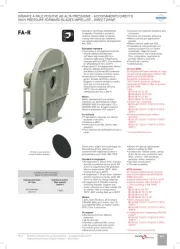
16 September 2025
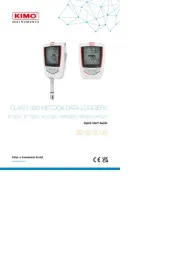
16 September 2025
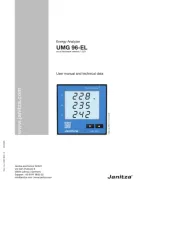
16 September 2025
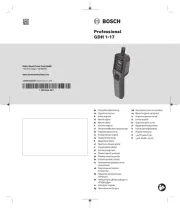
15 September 2025
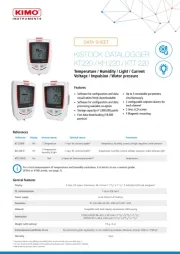
15 September 2025
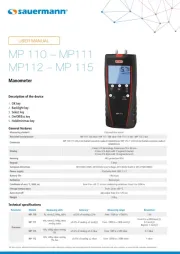
15 September 2025
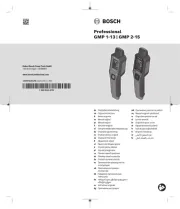
15 September 2025
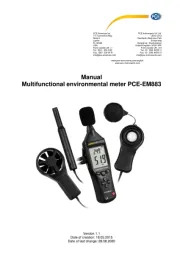
15 September 2025
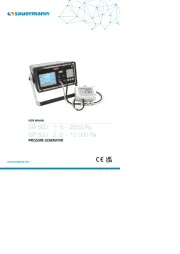
15 September 2025
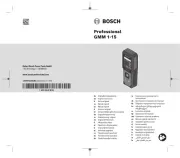
15 September 2025